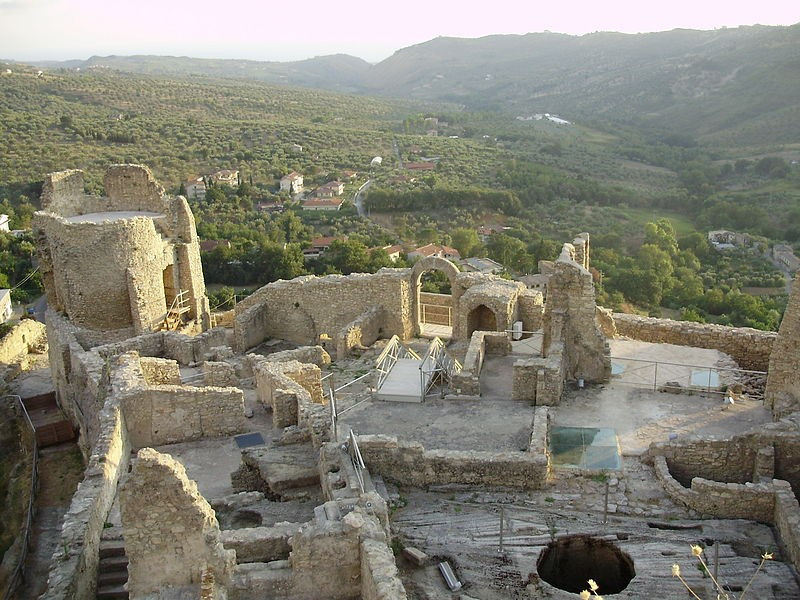Destinazioni - Comune
Cleto
Where
Cleto (Cosenza)
Cleto (Greek: Kleto, Klithos) is a town and comune in the province of Cosenza in the Calabria region of southern Italy. Set on the hills facing the Aeolian Islands, and the river Savuto Presila Cosenza.
History
The old Cleto, during the Norman rule changed its name to the name Pietramala and remained so until 1862 when it became Cleto. In the Angevin period Petramala, turns out to be the State of Ajello house together with other estates and castles. While Aiello was protected by an imposing castle (Norman), administered by captains directly appointed by the king, Petramala was a fortification to defend the isolated village below. During the feud of Aragonese Petramala, along with Lake and Savuto, is still employed by the State of Aiello. Investiture of the fief of Ajello succeeding two major families: Sersale of Sorrento, who distinguished himself in the house known Sansonetto, and the Spanish family of Siscar, knights rewarded by the rulers for their continued loyalty. Giannuzzi-Savelli under Petramala had a significant increase in population increasing from 825 inhabitants in 1644 to 1556 inhabitants in 1798, and became a barony independent, autonomous life, it remained for more than a century, under the same dominion, until 'abolition of feudalism. The first was Edward Baron Petramala Giannuzzi-Savelli, who was succeeded by Giovan Battista Giannuzzi-Savelli, who restored the castle, giving best form and fortified. The last feudal lords were Emilio and Domenico Giannuzzi-Savelli. Bernardino Giannuzzi-Savelli, son of Domenico, became Minister of Justice and Religious Affairs (25 May 1883 – 30 March 1884) of the Kingdom of Italy and appointed Senator June 12, 1881.
Artistic Heritage
The castle of Cleto
The castle of Cleto has an ancient origin. The Normans built the village on the slopes of Monte Sant'Angelo to the top of which they built a castle overlooking the valley to the sea. Hit two majestic towers of the castle cylindrical, the first devoted to defense, guarding the drawbridge on the left. Inside a large tank collected the rainwater that could be used to quench the thirst, while another tank placed below ground and covered it could hold many foodstuffs. The other tower was divided into two intended for the defense of the top and the bottom of the home to Baron. In the forties was found, sealed and walled in the tower, where a scroll about the life of the castle and the uncontrolled power of the Baron that, among other things, had power of life or death of any person found guilty of crimes or high treason. The death occurred due to suffocation as the condemned man was thrown into the "wolf" a cave hundreds of feet deep and no way out, so that if the condemned did not die for the fall was destined to die of hunger. Was a fervent and active life in the castle, the baroness controlled spinning and weaving of linen and silk worms that grow abundantly in the basement of the castle for the abundance of "mulberry vines" growing along the banks of the Roil. In cases of natural disaster or disease the sick were brought to the castle and kept there under the supervision of the Baroness. The life spent in the castle interrupted sometimes by the presence of Muslims who infested areas where they disembarked, the peasants left their homes and fled to the castle by filling the valley of their cries: "In the steep! to the steep! Sonati the Campanian, ca ra fell to the Turks on a navy. "
Consolation Church
Of Consolation Church was built in 1600 (and restored in 800), has a bell tower with a spire curved mantle of polychrome majolica (seventeenth century) Byzantine style of clear, frescoed ceilings, R. Aloisio by Aiello and an oil painting on canvas, with Our Lady of Consolation, unfortunately stolen.
Geographical position and climate
The town is situated at an altitude of 200 meters above sea level at the foot of Mount St. Angelo. Just a few kilometers from the Tyrrhenian Sea. The hillside location means that you have a very dry climate with hot summers and mild winters. The vegtazione is typical of the Mediterranean, the whole area is covered by olive trees and in the area of the river Savuto of oranges and lemons. The oil production is one of the bases of the local economy, as well as tourism and agriculture in general. There are also many typical dishes and products. Of great interest is the fauna of the area comprising a number of species of birds of prey, foxes, wild boar and even wolves in the mountain area.
Getting there
With car
Cleto is easily accessible dall'autosatrada Salerno-Reggio Calabria exit Falerna out, then continuing north to Campora San Giovanni, from here you climb up the hill for 10 km.
By plane
Just 28 km from the Lamezia Terme Airport, you can take the bus in Campora San Giovanni, Cleto, Aiello Calabro
Personality linked to the city
Bob Chiarelli, former Mayor of Ottawa.
See also
Savuto river
References

